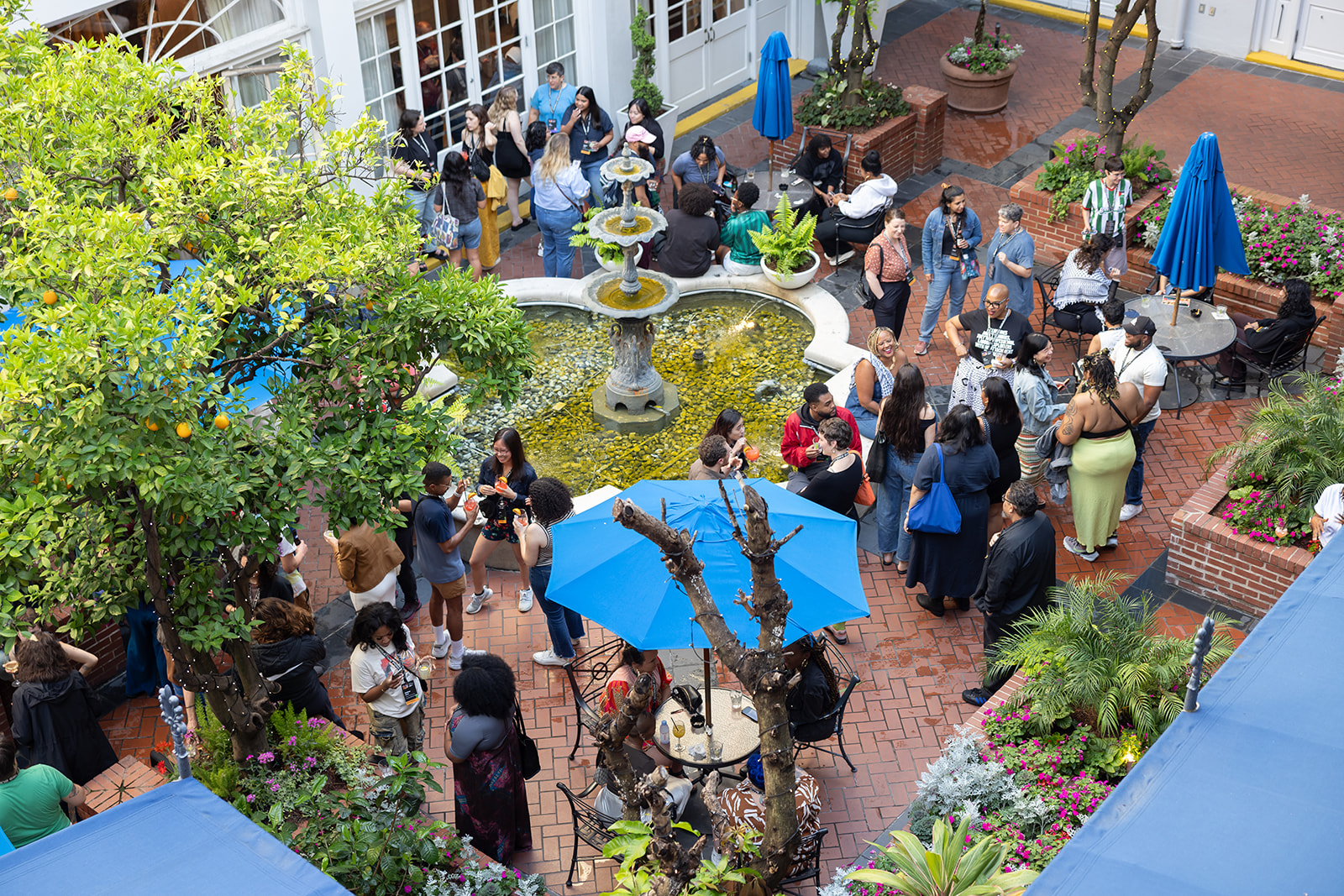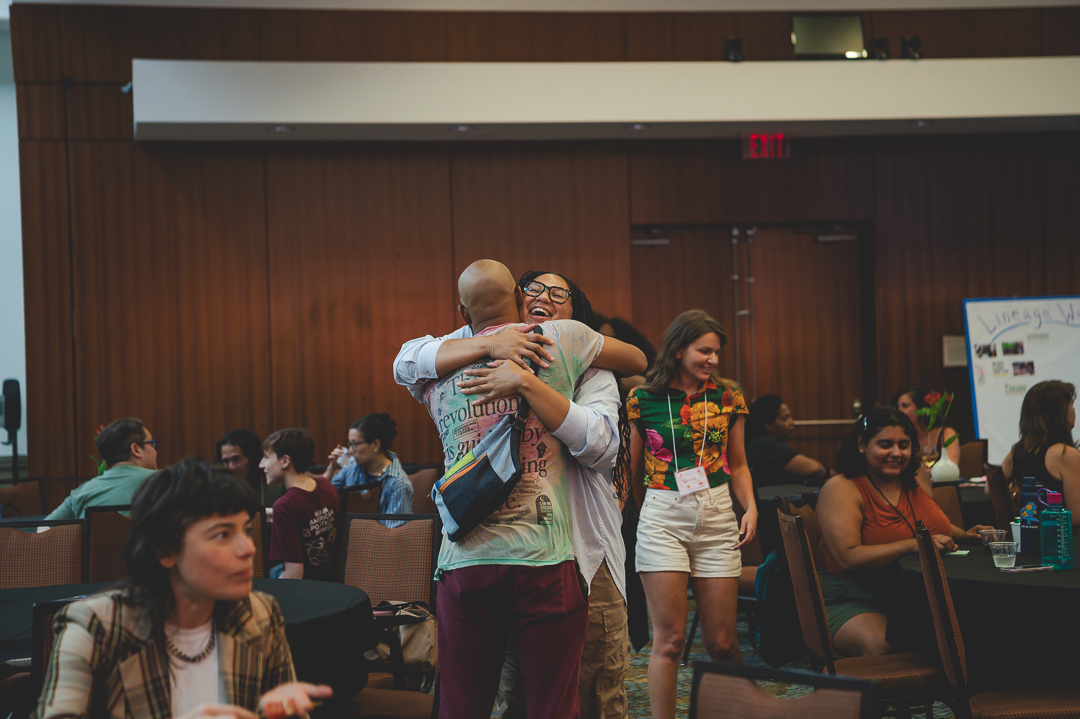There is a global conspiracy of elites drinking the blood of babies in order to curate magical powers, and Donald Trump is playing 5-D chess in a battle with these evil forces. Oh yeah, there are also thousands of children in captivity in tunnels under NYC among other places…
At least these are the core stories of the QAnon conspiracy theory melting the minds of hundreds of thousands of people both in and outside of the U.S., destroying families, swelling the ranks of the right-wing, and lending volume to the BIG LIE. Of course, this sprawling conspiracy theory leverages and builds on long standing anti-semitic and right-wing populist narratives.
ReFrame’s dynamic team of strategists, researchers and creatives are working closely with Women’s March to identify the most powerful networks and most salient stories in the QAnon universe. Our strategy makes way for disruptions in the QAnon network and narrows the soft on-ramp to deeper right-wing ideology and organizing.
Crystal Aryee, Bia Jackson and Ivie Osaghae of #TeamReFrame took a moment to discuss the importance of this work.
Crystal: Why is ReFrame working to interrupt QAnon’s ridiculous and laughable conspiracy theory?
Ivie: QAnon is not just a wacky idea secluded to the internet. It impacts the offline world with devastating consequences. Just take the January 6 attack on the Capitol as evidence. There is an enormous impact on Black, Brown and Indigenous communities - especially since the onset of Covid-19 when people are looking to break isolation and are in search of community. For over half a decade, QAnon has touched many parts of our political sphere and has shaped how we orient ourselves to rising fundamentalist ideology. It's important to be able to combat the rising right-wing tide that looks more innocuous than many would think.
Bia: Because of this harsh reality, we are working with Women’s March and engaging their base to create tailored interventions that can be used to inoculate families, communities, and institutions. Women’s March has built a network of tens of thousands of activists pushing back against the threat of disinformation from their base of women and feminists in suburban and rural settings. Our partnership allows us to leverage their base to combat the threat of QAnon.
At the 2022 Women’s Convention, we presented four workshops on narrative power building, disinformation, and narrative research our team did on QAnon and adjacent stories and messages. Each workshop welcomed over 100 people, some of whom shared stories of personal impact – people dealing with friends and family members who spread QAnon or Q-adjacent messaging. Since then, we’ve been training the Women’s March Digital Defenders group of 300 to create persuasive content and launch digital narrative campaigns on social media and other online platforms. We’ve also reached hundreds of thousands of people with compelling findings from the QAnon research, along with intervention and interruption recommendations, on platforms like TikTok and Instagram.
Crystal: You mentioned that QAnon touches many of our communities. Do you have a personal tie to QAnon and how have those experiences impacted your work?
Ivie: A member of my family, who is in the U.S. on an immigrant visa, came for a little bit to handle citizenship processing and ended up stuck here because of the pandemic. They spent a lot of 2020 on the internet and found a community of people adjacent to QAnon; they have since become full-blown believers. There are a lot of entry points, especially around homesteading and natural living, that lured this family member in impacting their decision to not get the Covid-19 vaccine. This means they can’t return home to be with their family and are forced to navigate the U.S. legal system.
QAnon is not just losing family or friends who may show up to something like the events of January 6 – it is also loved ones exposed to the idea that “darker things” are moving, controlling the world and government - echoes of centuries old anti-semitic narratives. What QAnon offers to people who are isolated and lonely is a connection to an insular community that offers answers – this primes people for recruitment into right-wing values and organizations. Our work of researching and identifying how our friends and family move down the rabbit hole is vital to being able to help others recognize when a loved one is being wooed by right-wing extremist messaging and what they can do about it.
Crystal: What are the biggest challenges and threats facing your research
Ivie: The biggest threat is the ever evolving nature of QAnon. As more people have gotten deplatformed from popular social networks, the places that these conspiracy theories and right-wing recruitment efforts show up start to get more concealed. Our research and strategy allows our team to find those people who have seeped into the crevices and continue to monitor the stories and messages they are spreading. It requires us to think creatively and seven steps ahead to diversify avenues for our research including things like message and content testing, polling, surveys and more.
Crystal: The research methodology used to track the QAnon network is quite advanced. Keeping in stride with this work along with training the field of organizers, what does the future of narrative power building look like?
Bia: The future is hopeful - with more organizations focusing on building narrative power at scale in tandem with organizing efforts - because they're not separate.
Ivie: Exactly. It also looks like meeting people where they consume content. We could have a presence in gaming spaces, on Youtube, and other avenues where people are taking in stories, entertainment, and information. Tik tok and the like make news stories more ubiquitous however, there is still a challenge of discerning what is useful, harmful, and newsworthy. So the future looks like a continuation of training up the next generation of strategists, communicators, and organizers who are shaping what the media looks like and seeding narratives of liberation, justice and healing for a more progressive minded future.
Crystal: The work of mapping out the QAnon network and developing interventions is undeniably a heavy burden. What brings you hope in this work?
Ivie: My hope and my sustaining energy comes from seeing my family and other people who have been impacted being able to resonate with our findings and find use in our intervention tactics. This work scratches my brain in the right way to keep me energized and refreshed and keep me on my toes about how we can continue to use our tactics, our strategies and our vision to move the needle, not just an inch but a considerable amount for a better future.
Bia: I find hope in the moments that I see my family members and my friends talking about, or having a hard conversation about a topic that I know has come up in the research quite a few times. Also, to see my nieces and nephews, who are super curious about the world, daring to be themselves. That piece deeply informs the work that we're doing because if we don't, that will be lost. And I think the other piece that really inspires me is the innovation around technology and folks telling their stories, and specifically, Black and Brown folks telling their stories in a new and re-energized way.
Be on the lookout for ReFrame’s QAnon narrative research findings and report - to be released in 2023.







































.jpeg)

.png)

%20(1).png)





























